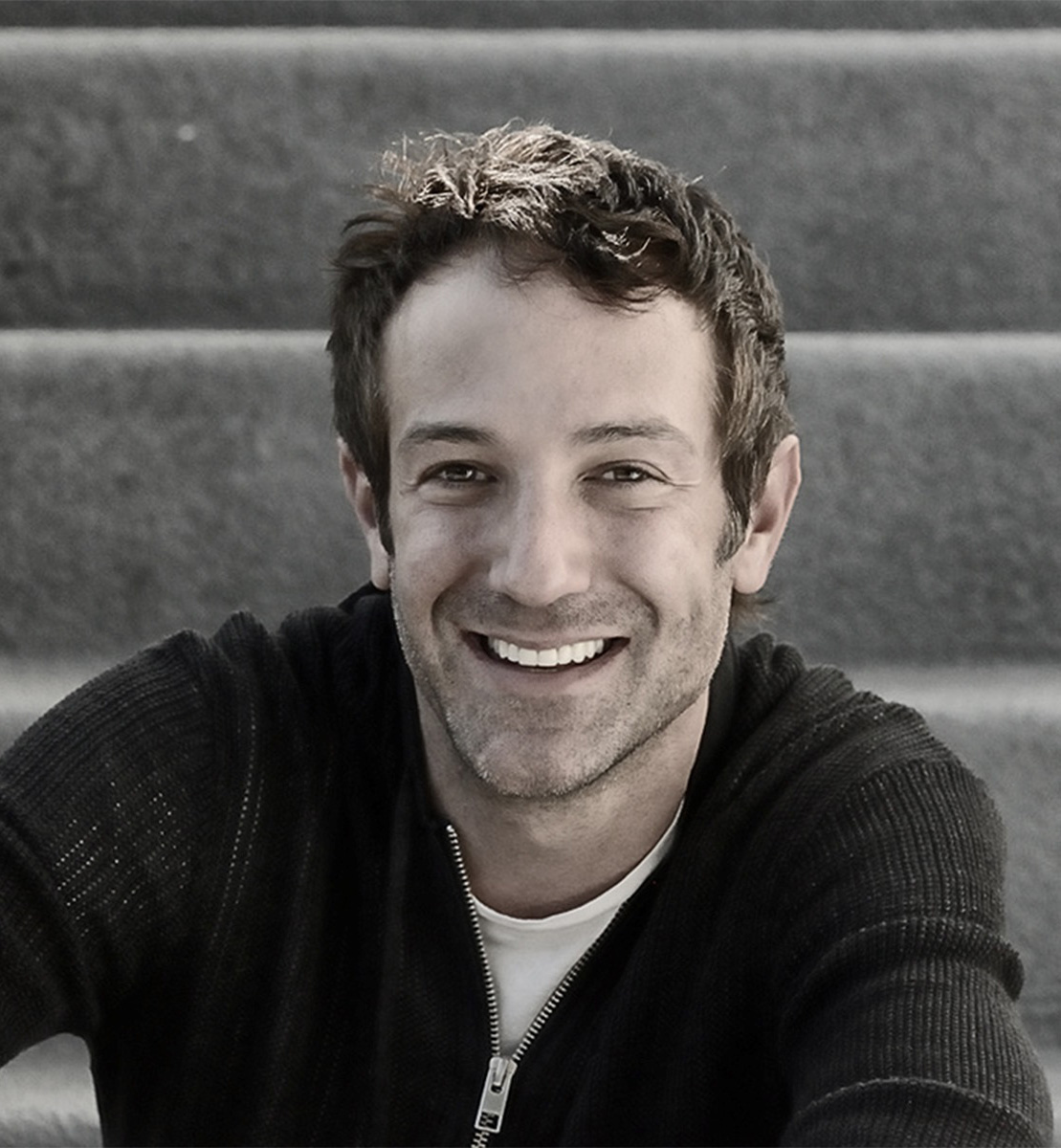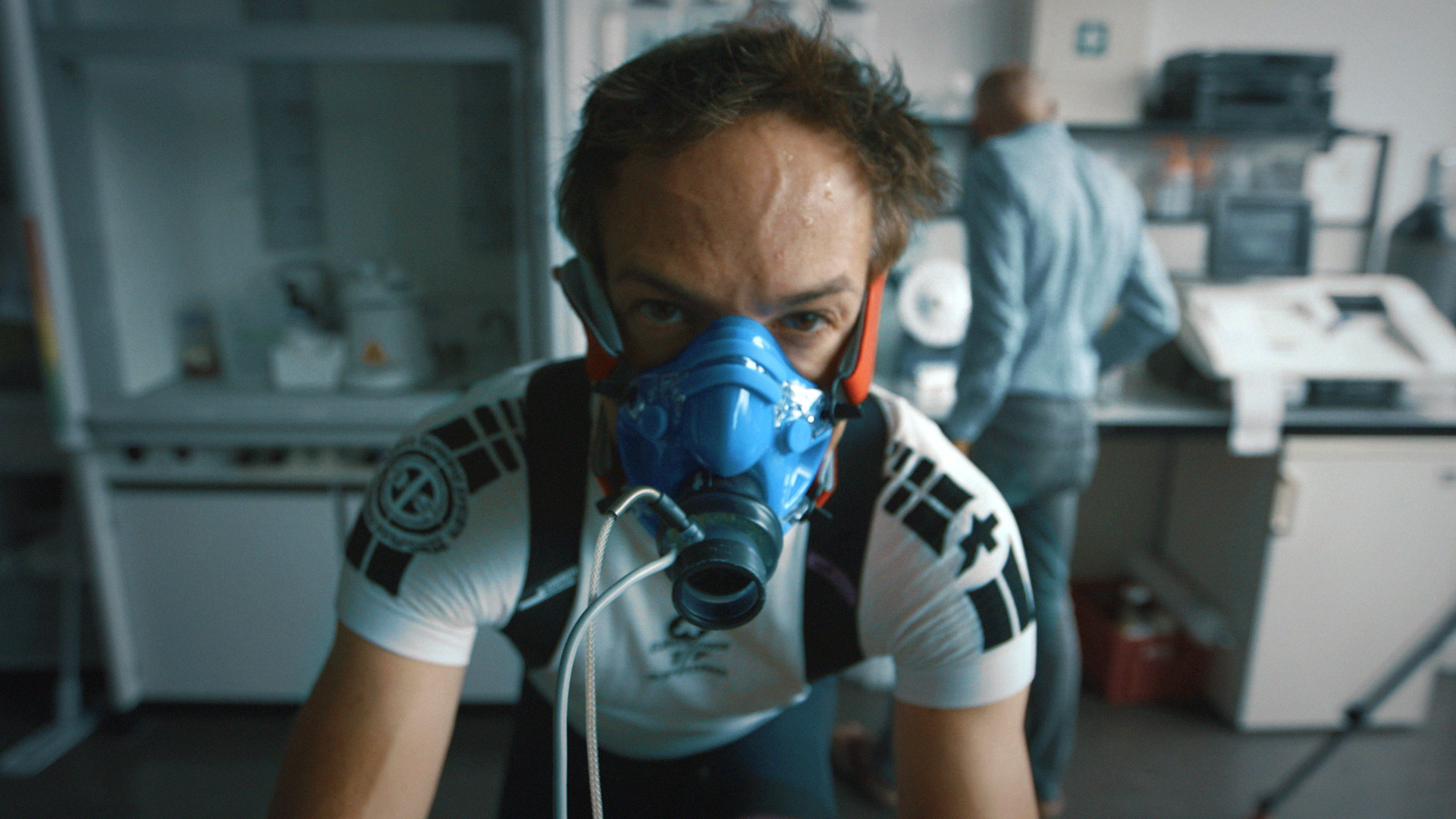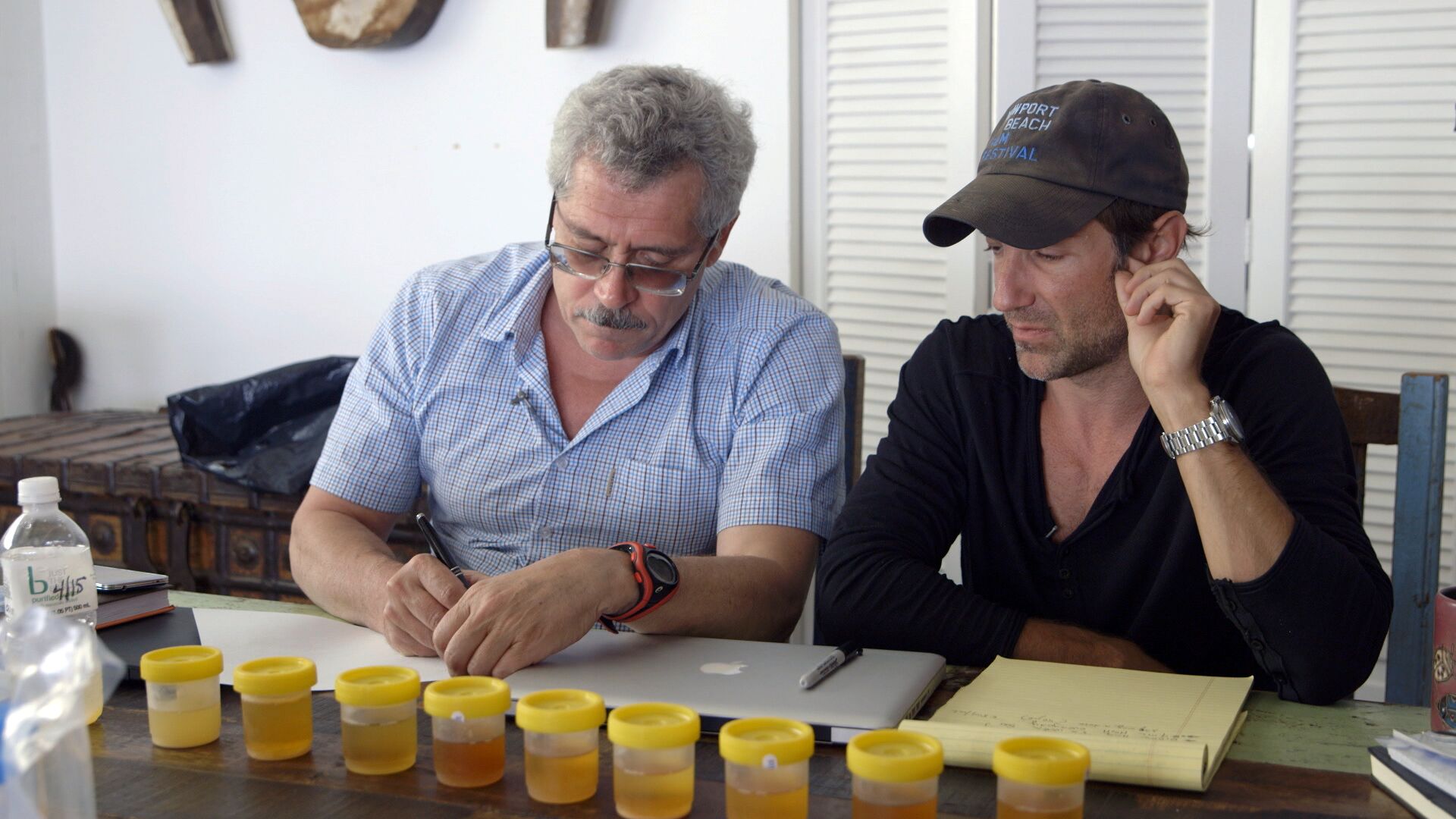
Bryan Fogel’s documentary Icarus is very unusual — it turned into something completely different from what he intended. It began as a personal doc in which Fogel, who moonlights as a bike racer, tried to learn how a professional athlete like Lance Armstrong cheated on drug tests by injecting himself with steroids and other performance-enhancing drugs and still passing those tests. Via Skype, he was aided by a Russian man, Grigory Rodchenkov. This is actually one of the few docs for which spoiler warnings are necessary; suffice it to say that it expands into a work of great ambition that explores the top-to-bottom corruption of Russian politics, using Russia’s doping of its athletes as a microcosm. Fogel is one of the few documentarians I’ve interviewed who spent as much time talking about contemporary Hollywood films as other nonfiction films; it shows in Icarus, and I don’t mean that as a criticism. The film begins theatrical runs in New York, Los Angeles and Chicago August 4, simultaneous with its Netflix debut.
StudioDaily: I noticed that you worked with two cinematographers. What portion of the film did each work on, and did they ever collaborate?
Bryan Fogel: My main guy is a New York-based guy by the name of Jake Swantko. He shot all the cycling-based stuff, all the stuff in Russia. He traveled with me extensively over two and a half years, everywhere we were going, The other guy was Timothy Rode, who was Los Angeles-based. He shot a lot of the stuff in Grigory’s apartment, pretty much all the stuff of Grigory in Los Angeles before going into protective custody and everywhere else.
Are you still in touch with Grigory?
Yes and no. I’ve been able to get updates from his legal counsel about how he’s doing. Through them, we were able to show him the finished film a month ago. But I don’t know where he is and I don’t have his phone number.
The film mixes a pretty wide variety of tones and textures. There are parts that are very personal and intimate, to the point where I wondered if your partner had shot them. There’s also extremely slick computer animation. Was that always your goal, or did it develop from the nature of the project?
From the intimate stuff, the film began as a Super Size Me-type experiment with me taking performance-enhancing drugs and trying to beat drug tests. In the first year of the film, I did a lot of shooting myself, setting up a [Canon] C300 camera, a Vixia or a 5D. As I started traveling to Colorado and New Mexico, I usually had Jake and a second shooter with me. I was overseeing them and telling them what to shoot, but they were also great at what they did. The story really started on this personal level, with a handheld camera and a lot of stuff I cut out. When Grigory became in danger and the film became a thriller — and not just a thriller, but a real-life global scandal going all the way to Putin — I thought about how I could craft it that way. I started using films like The Bourne Identity and Enemy of the State, and all these kind of Hollywood thrillers that managed to capture a momentum. To me, a lot of it boiled down to the score and music. So I worked with Adam Peters, who did the score for Snowden and most of Oliver Stone’s films. I went after Adam as a composer because I had heard snippets of the Snowden score and thought “This is the tone.” Grigory is Russia’s [Edward] Snowden. Who better to compose the score? Then I looked at who could essentially recreate this laboratory. We had some photos, but I went to this company in New York, ODD (Office of Development & Design), and had them send some renderings and they came onboard. It was a seven- or eight-month process of CGI to recreate the laboratory. After the film came out of Sundance, Netflix was very kind to allow me four months to keep working on it. Because it was great at Sundance — but I was racing against a deadline and delivered a wet print to them at 10 a.m. the morning of our screening. Even though it was incredibly well-received and we had this Netflix sale, I told Netflix, “I think this film can be better.” We spent another four or five weeks honing the graphics. I continued working on the film with my composer. I got to continue working on making all those animations and drawings flow seamlessly. As it took that shape, it really was how I envisioned it.
I actually found the early scenes of you injecting yourself with steroids really difficult to watch. For me, that was closer to a horror film than a thriller. How much did you research the risks of what you were doing, and how far were you willing to go for the sake of the film?
You go back to this initial idea I had, and so much of it had to do with my passion for cycling. Another part came from my passion for filmmaking. The third part came from my belief that Lance Armstrong, regardless of who he is as a person, was scapegoated. This is a person who had done the same thing that everyone had done. He had never been caught. To this day, he has passed 500 doping controls clean. It’s like getting Al Capone for tax evasion. They never actually caught him for cheating. He’s the most tested athlete on the planet Earth. And the science has failed, the system has failed. Is this Lance’s fault? Or is the system dysfunctional? Forget about Lance. What does this mean for all sports and the 99% of athletes who aren’t tested as much as Armstrong? We have these resources, but what does it mean? I had a little chunk of money to get started on the film. I decided it was going to be my job, and I took it really seriously. A lot of times along the way — and we had a lot of scenes where I would inject myself and I just kept bleeding — I was losing my mind. I wasn’t worried about the risks I was taking with the hormones. More about riding my bike downhill at 70 miles per hour and putting my life on the line that way for the film. I don’t know. When I commit to something, I go all in and forget about the dangers. That was my train of thought when things transpired with Grigory and I became his mentor, savior and confidant. That happened after two years of traveling, taking drugs, doing crazy bike races through Europe. This was where we’re going, and I’m gonna go there.
America and Russia are currently linked together in a way that they never have been before. In the present context, your film plays as a directly political statement in a way that might not have at the time you began making it. Do you see it that way?
I could never have imagined when this journey started in 2014 to when Grigory goes into protective custody in July 2016 to us getting accepted into Sundance in October 2016 when I believed Clinton was going to win the election to then Trump winning to what has now come forward with the Russia story. It’s a spectacular series of events. Before the current America-Russia investigation got underway, I thought, “This is a spectacular story of international fraud. This shows, on the highest level, what is going on behind closed doors in the Kremlin and the extent to which Russia is willing to cheat, win at all costs and commit criminal fraud.” I thought that was a great story because if you really look at it, it changes all Olympic history, not just Sochi. As McLaren put out in his report and what I came to learn, what happened at Sochi was the icing on the cake. They’d been doing this for 40 years before that. It calls into question every medal ever won at the Olympics. So that was a tremendous story, but to take this next step with what’s happening in the Trump administration and this idea of fake news and alternate facts — what has happened over the past six or seven months in this country is unprecedented. This film could be a conduit to which people can say what’s going on despite denials and what they read in the news. It’s all forensically proven, and they still deny it. I hope it will be a call to action. The U.S. shouldn’t tolerate this behavior anymore. Nor should Russians living in Russia.
Your film is influenced by Hollywood thrillers. Are you interested in abandoning documentary form altogether for narrative fiction?
The answer to that question is that Paul Greengrass is one of my favorite directors. His ability to shoot handheld, verite, action — I would love to do a film like that. When he makes a thriller, it’s on a level above all the other ones because of how real they feel. I would love to do a feature political thriller, something based on real people and real stories. I like facts and truth rather than just entertainment. But as far as documentary, I don’t want to abandon it because I love its form and what it can do for the world. I also love the journey that it can have — in this case, starting out in one place and ending up a million miles from where I could have imagined. If you don’t pick up the camera and start on the journey, you never know where it’s going to go. I’d like to continue with documentary and hopefully shepherd other documentary filmmakers and produce other documentaries. I think I can really lend a voice to them. I’d also like to work on a larger scale, on a Hollywood narrative film.
What different kinds of cameras was the film shot on?
The majority of the stuff was shot on Canon C300s. It’s just a great camera. They’re not too heavy. All the stuff we were shooting on car mounts and off the backs of motorcycles worked great. The camera is very flexible like that. So they were our main camera. I picked up a Canon Vixia, which was the first camera that I bought. It was the nicer Vixia, but I can’t remember which model I got. What’s cool about it is that it’s really a personal camera. The idea was that if I were shooting myself in intimate moments, I could use it. It’s incredibly small and portable and I could put it in a backpack. That lent a texture to it. We shot stuff along the way with a Sony FS7. We shot some interviews with Sony cameras. We shot with 5Ds, GoPros, drones. There’s a lot of drone stuff. It was the nature of this film to use a lot of different cameras. There were so many variables, and I just kept going. I had Jake and T.J., but there were a lot of times where I had to find another shooter and he said, “I’ll be able to fix it in color.” We even shot the opening and end titles with all the feathers with the [Vision Research] Phantom. It was just the evolving nature of the film. There were some times when I was traveling, and if someone had another camera, I figured we could fix it in post.
Were you inspired by any other films about sports?
I love Senna. I think it’s one of the best sports documentaries ever made. I was just riveted by that film. Man on Wire, to me, is one of the docs that stands the test of time. I never felt like it was a doc. I felt like it was purely a narrative film. I was very inspired by that film, and I still am. Undefeated is a wonderful film that just has this great narrative about the lives of a high school football team. Those three films stand out, even though Man on Wire isn’t a sports doc. On the feature side, I loved Ron Howard’s Rush, about [Formula One legend Ayrton] Senna and the British guy who tried to beat him. It’s very underrated, and it didn’t do anywhere near as well as I thought it should. The way he shot that is great. I’m also a huge fan of Ezra Edelman’s O.J. film [O.J.: Made in America], although of course it’s about much more than O.J. and sports. But it did have all those sports elements. I’m also a big fan of Laura Poitras’ films, especially Citizenfour.
Were you surprised by the way Grigory grew so much in moral stature? He initially seems rather sleazy.
Grigory is a complicated person. I think to go inside his mind, we really need to understand how we see things from a Western perspective. The Western perspective is right/wrong, what’s ethical/what’s not ethical, what’s criminal/what’s not criminal. It comes from the way our society is structured: democracy, an abundance of wealth and capitalism. We’re able to look at others and say, “You’re doing bad,” “You’re doing good.” If you step outside of the American perspective and look at Russian culture — this guy came from communism and, before that, Stalinism. Under that, it’s a completely different mentality. Under communism, they had to figure out how they were going to eat and get gas. So the nature of their society has always been corruption. There’s always been a criminal element. But, from their point of view, it’s just survival and how things get done. Every building contractor is figuring out a deal. If you get pulled over for a traffic ticket in the U.S. and bribe a cop, you’ll go to jail. If you get pulled over for a traffic ticket in Russia and don’t bribe the cop, you’re gonna go to jail. So it’s a different mentality. When you step inside the head of a guy whose grandfather was purged by Stalin and whose mother gave him steroids when he was 14 years old — but everybody was taking steroids — and this idea of anti-doping never even existed. Anti-doping was just a pose to conform to the world.
Grigory never looked at what he was doing as wrong for most of his career. What happened in Sochi crossed the line for him. It was a game of science. It was a cat-and-mouse game. We’re going to create the tests and I’m going to create the cure: I will hide anabolics by mixing them with alcohol. This was a game. Now, all of a sudden, it was outright criminal fraud. He took steroid-contaminated urine, broke into bottles, emptied out the dirty urine and replaced it with clean piss. This is no longer science, it’s just a criminal operation. Because of that operation, he viewed his own job, lab and employees as in jeopardy. He was told that after Sochi, they would go back to their old ways of fraud, like developing tests, not this new spectacularly criminal fraud. And out of Sochi, he quickly realized that not only had nothing changed, but that they were going to do this on a far bigger scale. They started doing it for the athletic swimming championships, even for college kids. They had plans for next year’s FIFA World Cup, which Moscow is still hosting, to do exactly what they did in Sochi. Grigory reached a point where it had reached its logical conclusion. Beyond that, he knew he was disposable under Putin’s regime, and he had enough. He was also personally disappointed by Russia’s incursions into Chechnya and Ukraine. Because of Sochi, Putin had massive national acceptance. His approval rating was so high. There were so many things that motivated him to come forward, and he was the only person on the planet who had those information. He was it. Then I had it, and I spent seven months sitting on it and figuring out if I should approach The New York Times.
Fogel arranged a series of interviews between New York Times journalists and Rodchenkov that were published last spring. Icarus opens in New York, Los Angeles and Chicago and begins streaming on Netflix tomorrow.
Did you enjoy this article? Sign up to receive the StudioDaily Fix eletter containing the latest stories, including news, videos, interviews, reviews and more.










